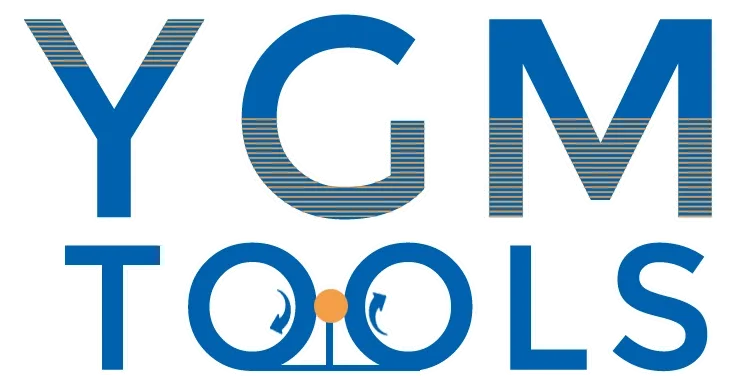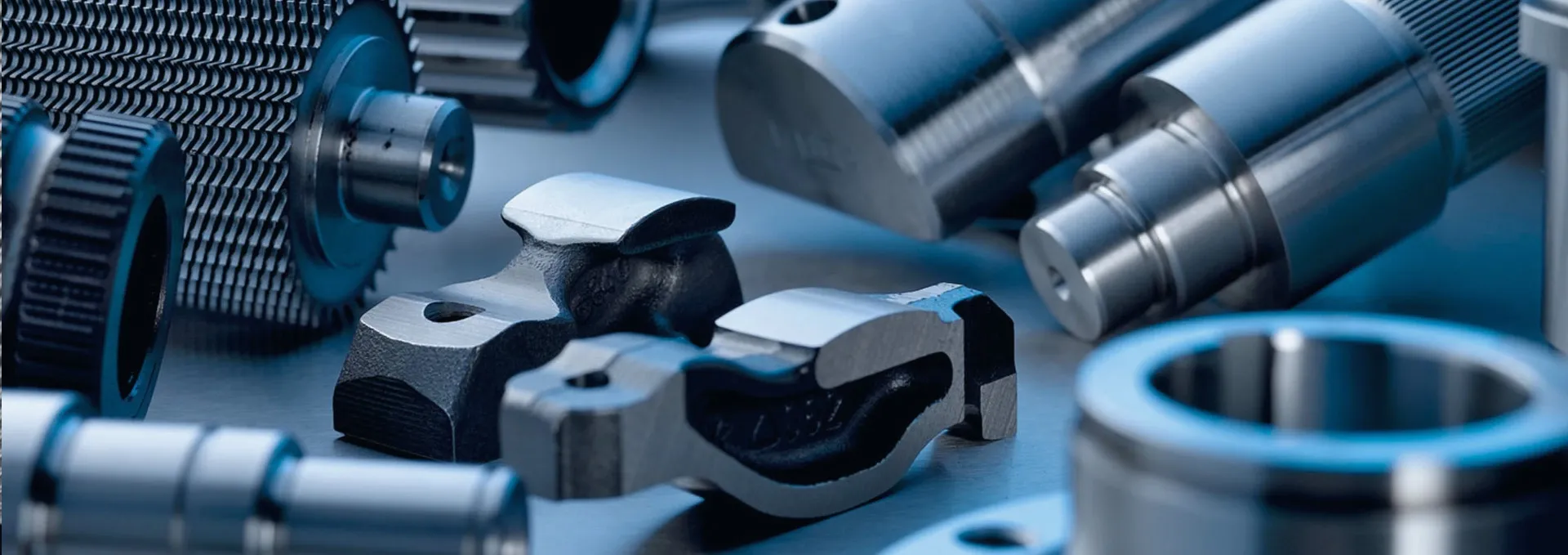Precision Thread Rolling Tools for Diverse Machines
Understanding the Precision and Efficiency of Thread Rolling Tools
In the realm of advanced manufacturing, the thread rolling tool stands as a cornerstone technology for producing robust and precise threads. Unlike traditional thread cutting, which removes material, thread rolling is a cold-forming process that reshapes the workpiece through plastic deformation. This method significantly enhances the material's structural integrity, leading to threads with superior strength, fatigue resistance, and a finer surface finish. The application of such tools spans across critical industries, demanding high-reliability components, from automotive and aerospace to petrochemical and construction. Understanding the intricacies of these tools, from their meticulous manufacturing to their diverse applications, is crucial for optimizing production processes and ensuring product longevity.
The demand for high-quality threaded components has driven continuous innovation in thread rolling technology. Modern manufacturing environments increasingly favor thread rolling for its economic and performance advantages, including material savings, increased production speeds, and the elimination of chips. This evolution is particularly relevant for high-volume production of fasteners, rods, and other threaded parts, where consistency and durability are paramount. As industries move towards more sustainable and efficient practices, the role of advanced thread rolling solutions becomes even more pronounced, offering a reliable path to achieving superior product characteristics with minimal waste.
The Advanced Manufacturing Process of a High-Performance Thread Rolling Tool
The creation of a high-performance thread rolling tool is an intricate process, demanding precision at every stage to ensure durability and accuracy. It begins with the selection of premium-grade tool steels, typically high-speed steel (HSS) or specialized alloy steels, chosen for their exceptional hardness, wear resistance, and toughness. The manufacturing journey often involves several key stages, starting with precision forging or casting to achieve the initial blank shape. This foundational step helps in refining the grain structure of the steel, which is critical for the tool's final performance.
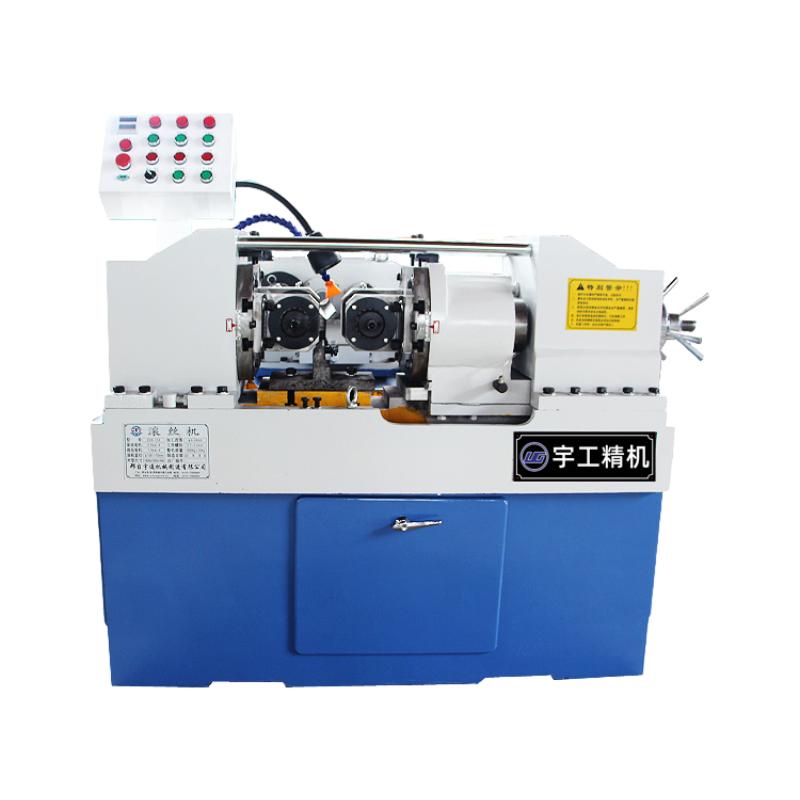
Following the initial shaping, advanced CNC machining plays a pivotal role in carving the precise thread profiles onto the tool. This stage requires multi-axis machining capabilities to achieve the intricate helix angles and pitch accuracy necessary for consistent thread formation. Post-machining, the tools undergo a rigorous heat treatment process, often involving hardening and tempering cycles, to achieve the required Rockwell hardness (HRC) levels, typically ranging from 60-64 HRC for optimal wear resistance. This thermal treatment is crucial for enhancing the tool's fatigue strength and ensuring a long service life.
The final stages involve precision grinding and lapping to achieve the desired surface finish and dimensional accuracy. Strict adherence to international standards such as ISO 9001 and ANSI specifications is maintained throughout the manufacturing process, with comprehensive quality control checks at each phase. These checks include dimensional verification using highly accurate optical comparators and CMMs, hardness testing, and microstructural analysis. The meticulous attention to material selection, manufacturing processes like forging, CNC machining, heat treatment, and stringent inspection standards contributes to a thread rolling tool with an extended operational lifespan, often exceeding expectations in demanding industrial applications.
Technical Specifications and Performance Metrics
Selecting the correct thread rolling tool necessitates a thorough understanding of its technical specifications and expected performance metrics. These parameters directly influence the quality of the rolled thread, the tool's lifespan, and the overall efficiency of the threading process. Key specifications often include the material grade, hardness, specific thread profile (e.g., Metric, UNC, UNF), pitch, and diameter range capacity. Performance is typically measured by metrics such as tool life (number of parts produced), surface finish of the rolled threads, and the accuracy of the pitch diameter.
| Parameter | Typical Range/Value | Impact on Performance |
|---|---|---|
| Material | High-Speed Steel (HSS), Cold Work Tool Steel (e.g., D2, M2) | Determines wear resistance, toughness, and overall tool life. |
| Hardness | 60-64 HRC (Rockwell Hardness C) | Crucial for resisting deformation and maintaining cutting edge/form integrity. |
| Surface Roughness (Rolled Thread) | Typically Ra 0.8-1.6 µm (32-63 µinch) | Better finish than cut threads, enhances fatigue strength and corrosion resistance. |
| Tool Life (Estimated) | 100,000 to 1,000,000+ parts (material dependent) | Indicates economic efficiency and production continuity. |
| Thread Accuracy | Exceeds Class 2A/B (ANSI), 6g/6H (ISO) | Ensures proper fit and assembly with mating components. |
| Applicable Materials | Steels (up to 32 HRC), Stainless Steels, Aluminum, Brass, Copper | Versatility across various industrial applications. |
The ability of a thread rolling tool to consistently produce threads that meet strict tolerances, often surpassing the quality of cut threads, is a testament to its design and manufacturing precision. For example, the cold working process inherent in thread rolling results in work hardening of the material in the thread roots, significantly improving fatigue strength—a critical factor for applications subject to dynamic loads. This data-driven approach to tool selection and performance evaluation ensures that manufacturers can make informed decisions, leading to superior product outcomes and optimized operational costs.
Diverse Applications Across Industries and Key Advantages
The versatility and inherent advantages of the thread rolling tool make it indispensable across a multitude of high-stakes industries. In the petrochemical sector, for instance, components requiring exceptional corrosion resistance and high-pressure integrity, such as those used in pipelines and refining equipment, greatly benefit from rolled threads. The cold-forming process creates a smoother, work-hardened surface, which is less prone to stress corrosion cracking and offers enhanced sealing capabilities, crucial for handling volatile fluids and gases. Similarly, in metallurgy, rolled threads are preferred for their superior mechanical properties in structural components and machinery parts that endure significant loads and vibrations.
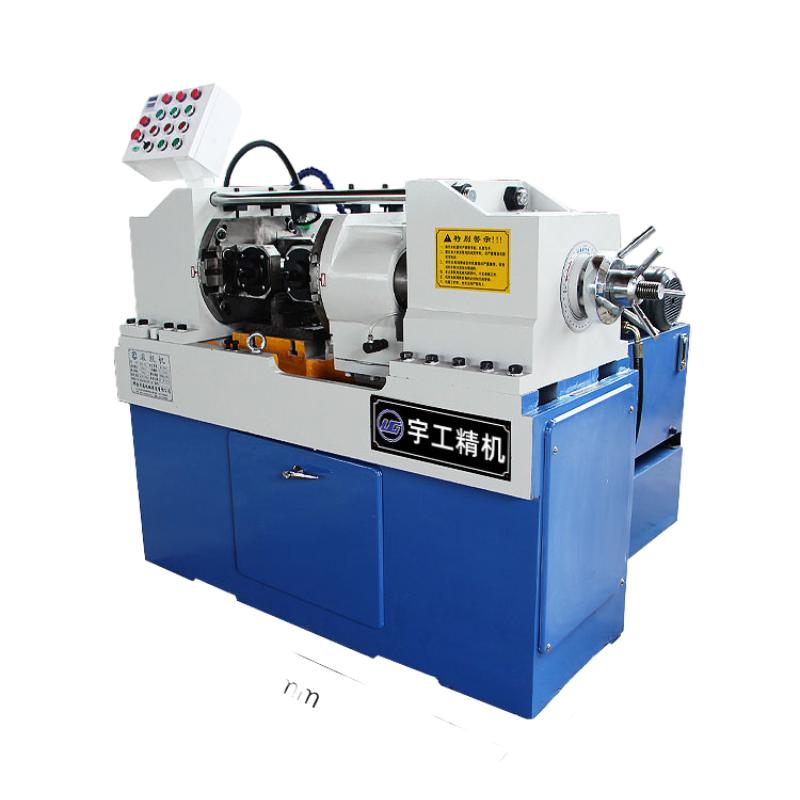
For the water supply and drainage industry, where components face constant exposure to water and various chemicals, the corrosion resistance imparted by thread rolling is a significant advantage. This ensures the longevity and reliability of pipes, valves, and fittings in critical infrastructure. Beyond these, the automotive and aerospace industries heavily rely on rolled threads for fasteners and structural components due to their high fatigue strength and reduced susceptibility to failure under dynamic stresses, directly contributing to vehicle safety and aircraft reliability. The cold-forming process also avoids the creation of stress risers often found in cut threads, further enhancing durability.
A key economic advantage is the energy efficiency offered by thread rolling. Unlike material removal processes that consume significant power and generate heat, thread rolling primarily involves plastic deformation, requiring less energy input per part. This translates to lower operational costs and a reduced environmental footprint. Furthermore, the absence of material removal means no chips are generated, simplifying waste management and often allowing for the use of less material overall. These combined benefits—superior part performance, energy savings, and environmental considerations—underscore why the thread rolling tool remains a critical component in modern, efficient manufacturing.
Exploring Thread Rolling Machine Types and Capabilities
The efficacy of a thread rolling tool is intimately linked to the machine it operates within. Various types of thread rolling machines cater to different production volumes, part geometries, and industry specific requirements. The primary categories include `flat die thread rolling machine`s, `small thread rolling machine`s, and `hydraulic thread rolling machine`s, each offering distinct advantages in specific scenarios. Flat die machines are renowned for their high-speed production capabilities, especially suited for high-volume manufacturing of standard fasteners like bolts and screws. They utilize two flat dies, one stationary and one reciprocating, to form the thread profile.

`Small thread rolling machine`s are typically more compact and are ideal for producing smaller diameter threads or for environments with limited space, often found in specialized workshops or for specific product lines that don't require the massive throughput of larger machines. These can be bench-top models or compact floor-standing units, offering versatility for custom applications or prototyping. Their design often prioritizes ease of use and quick changeovers for various thread types. In contrast, the `hydraulic thread rolling machine` employs hydraulic power to generate the necessary force for thread formation, offering precise control over the rolling process. This hydraulic control results in exceptionally consistent thread quality, even with challenging materials or intricate profiles.
| Feature | Flat Die Thread Rolling Machine | Small Thread Rolling Machine | Hydraulic Thread Rolling Machine |
|---|---|---|---|
| Operating Principle | Reciprocating flat dies | Typically two or three cylindrical dies | Hydraulically actuated dies (flat or cylindrical) |
| Production Volume | High to Very High | Low to Medium | Medium to High (high precision) |
| Thread Quality/Precision | Good to Excellent | Good | Excellent, especially for difficult materials |
| Typical Applications | Fasteners, bolts, screws | Small parts, custom jobs, prototyping | Aerospace, automotive, high-strength parts |
| Energy Efficiency | High | Moderate | High (due to precise force application) |
The selection of the appropriate machine, whether a `flat die thread rolling machine`, a `small thread rolling machine`, or a `hydraulic thread rolling machine`, depends on specific production demands and the characteristics of the desired threaded component. Each machine type, paired with the right thread rolling tool, contributes to efficient and high-quality thread manufacturing.
Real-World Application Case Studies and Customization
The impact of a high-quality thread rolling tool is best illustrated through real-world applications where its advantages translate into tangible benefits. Consider a leading automotive manufacturer facing persistent issues with fatigue failure in critical engine fasteners produced by traditional cutting methods. By transitioning to thread rolling, specifically utilizing a specialized `hydraulic thread rolling machine` with optimized tools, they achieved a remarkable 30% increase in fatigue life for these components, significantly reducing warranty claims and enhancing overall vehicle safety. This success was attributed to the superior grain flow and compressive residual stresses induced by the cold-forming process, which are inherently absent in cut threads.
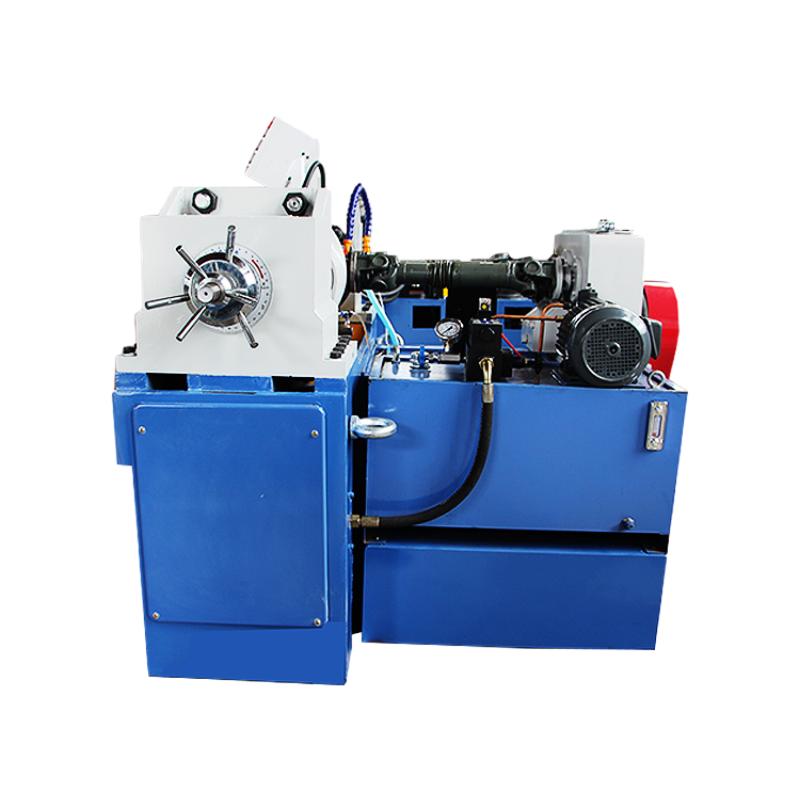
Another compelling case involves a large-scale construction project requiring thousands of high-strength rebar connections. The use of robust thread rolling equipment, integrated with durable thread rolling tools, allowed for on-site production of precise, strong threads on rebar ends. This not only reduced logistics costs associated with pre-threaded rebar but also ensured consistent thread quality crucial for structural integrity, even in challenging environmental conditions. The project reported a 25% faster assembly time for threaded connections, directly impacting project timelines and labor costs due to the reliability and uniformity of the rolled threads.
Beyond standard applications, custom solutions are often paramount. Many industrial partners require bespoke thread rolling tool designs to accommodate unique material properties, unusual thread forms, or very specific strength requirements. Our team works closely with clients to develop tailor-made solutions, from selecting specialized tool materials and coatings to designing custom die profiles. This collaborative approach ensures that the resulting tooling precisely meets the performance demands, offering a competitive edge and optimizing the production of highly specialized components. This adaptability underscores the commitment to delivering comprehensive threading solutions.
Ensuring Trust and Reliability: Our Commitment to Quality and Support
Trustworthiness and reliability are foundational pillars in the B2B sector, especially concerning high-precision manufacturing tools like the thread rolling tool. Our commitment to these principles is demonstrated through stringent quality assurance protocols and comprehensive customer support. All our products adhere to the highest international standards, including ISO 9001 certification for quality management, ensuring consistency and excellence in every tool we deliver. We frequently engage third-party testing labs to validate performance data, provide material certifications, and conduct rigorous lifespan testing, offering transparent and verifiable evidence of product superiority.
Quality Assurance and Certifications
- ISO 9001 Certified: Demonstrates our adherence to internationally recognized quality management systems.
- Material Traceability: Full traceability of raw materials to ensure purity and performance, crucial for demanding applications.
- Precision Testing: Each thread rolling tool undergoes dimensional accuracy and hardness testing using calibrated equipment.
- Industry Partnerships: Collaborations with leading industry bodies and research institutions to stay at the forefront of threading technology.
Customer Support and Warranty
- Comprehensive Warranty: We offer a robust warranty on all our thread rolling tools, covering manufacturing defects and ensuring peace of mind for our clients.
- Expert Technical Support: Our team of experienced engineers provides prompt and knowledgeable support for tool selection, application guidance, and troubleshooting.
- After-Sales Service: Dedicated support ensures optimal performance throughout the tool's lifecycle, including regrinding and re-coating services.
Delivery and Logistics
We understand the critical importance of timely delivery in manufacturing. Our streamlined supply chain and efficient logistics network ensure competitive delivery cycles, minimizing downtime for your operations. Standard tools are typically shipped within 2-4 business days, while custom orders adhere to a mutually agreed-upon production schedule, usually within 2-4 weeks depending on complexity.
Frequently Asked Questions (FAQ)
Q: What is the typical lifespan of a thread rolling tool?
A: The lifespan varies significantly based on the material being threaded, machine parameters, and tool material/coating. However, our tools are engineered for extended life, often producing hundreds of thousands to over a million threads in optimal conditions.
Q: Can your tools be used with different types of thread rolling machines?
A: Yes, our comprehensive range of thread rolling tools is designed to be compatible with various machine types, including `flat die thread rolling machine`s, `hydraulic thread rolling machine`s, and `small thread rolling machine`s, provided the specifications match.
Q: Do you offer custom thread rolling tool solutions?
A: Absolutely. We specialize in developing customized thread rolling tools tailored to unique thread profiles, challenging materials, or specific application requirements. Our engineering team collaborates closely with clients throughout the design and manufacturing process.
Conclusion: The Future of Thread Manufacturing
The thread rolling tool continues to be a cornerstone in the evolution of precision manufacturing. Its intrinsic ability to produce threads with superior mechanical properties, enhanced fatigue life, and remarkable surface finish positions it as the preferred choice for critical applications across diverse industries. From the high-speed efficiency of a `flat die thread rolling machine` to the precise control offered by a `hydraulic thread rolling machine`, and the versatility of a `small thread rolling machine`, this technology is adaptable to myriad production requirements.
As industries increasingly demand components that offer greater reliability, extended lifespan, and improved environmental efficiency, the importance of robust and intelligently designed thread rolling solutions only grows. Our commitment to advanced material science, precision engineering, and comprehensive customer support ensures that our thread rolling tools not only meet but exceed the rigorous demands of modern industrial production, driving innovation and delivering unmatched value.
References
- ASM International, Handbook Volume 16: Machining.
- Kalpakjian, S. & Schmid, S. R. (2014). Manufacturing Engineering and Technology (7th ed.). Pearson.
- Degarmo, E. P., Black, J. T., & Kohser, R. A. (2003). Materials and Processes in Manufacturing (9th ed.). Wiley.
- Society of Manufacturing Engineers (SME), Technical Papers on Cold Forming Processes.
Understanding the Precision and Efficiency of Thread Rolling Tools
In the realm of advanced manufacturing, the thread rolling tool stands as a cornerstone technology for producing robust and precise threads. Unlike traditional thread cutting, which removes material, thread rolling is a cold-forming process that reshapes the workpiece through plastic deformation. This method significantly enhances the material's structural integrity, leading to threads with superior strength, fatigue resistance, and a finer surface finish. The application of such tools spans across critical industries, demanding high-reliability components, from automotive and aerospace to petrochemical and construction. Understanding the intricacies of these tools, from their meticulous manufacturing to their diverse applications, is crucial for optimizing production processes and ensuring product longevity.
The demand for high-quality threaded components has driven continuous innovation in thread rolling technology. Modern manufacturing environments increasingly favor thread rolling for its economic and performance advantages, including material savings, increased production speeds, and the elimination of chips. This evolution is particularly relevant for high-volume production of fasteners, rods, and other threaded parts, where consistency and durability are paramount. As industries move towards more sustainable and efficient practices, the role of advanced thread rolling solutions becomes even more pronounced, offering a reliable path to achieving superior product characteristics with minimal waste.
The Advanced Manufacturing Process of a High-Performance Thread Rolling Tool
The creation of a high-performance thread rolling tool is an intricate process, demanding precision at every stage to ensure durability and accuracy. It begins with the selection of premium-grade tool steels, typically high-speed steel (HSS) or specialized alloy steels, chosen for their exceptional hardness, wear resistance, and toughness. The manufacturing journey often involves several key stages, starting with precision forging or casting to achieve the initial blank shape. This foundational step helps in refining the grain structure of the steel, which is critical for the tool's final performance.

Following the initial shaping, advanced CNC machining plays a pivotal role in carving the precise thread profiles onto the tool. This stage requires multi-axis machining capabilities to achieve the intricate helix angles and pitch accuracy necessary for consistent thread formation. Post-machining, the tools undergo a rigorous heat treatment process, often involving hardening and tempering cycles, to achieve the required Rockwell hardness (HRC) levels, typically ranging from 60-64 HRC for optimal wear resistance. This thermal treatment is crucial for enhancing the tool's fatigue strength and ensuring a long service life.
The final stages involve precision grinding and lapping to achieve the desired surface finish and dimensional accuracy. Strict adherence to international standards such as ISO 9001 and ANSI specifications is maintained throughout the manufacturing process, with comprehensive quality control checks at each phase. These checks include dimensional verification using highly accurate optical comparators and CMMs, hardness testing, and microstructural analysis. The meticulous attention to material selection, manufacturing processes like forging, CNC machining, heat treatment, and stringent inspection standards contributes to a thread rolling tool with an extended operational lifespan, often exceeding expectations in demanding industrial applications.
Technical Specifications and Performance Metrics
Selecting the correct thread rolling tool necessitates a thorough understanding of its technical specifications and expected performance metrics. These parameters directly influence the quality of the rolled thread, the tool's lifespan, and the overall efficiency of the threading process. Key specifications often include the material grade, hardness, specific thread profile (e.g., Metric, UNC, UNF), pitch, and diameter range capacity. Performance is typically measured by metrics such as tool life (number of parts produced), surface finish of the rolled threads, and the accuracy of the pitch diameter.
| Parameter | Typical Range/Value | Impact on Performance |
|---|---|---|
| Material | High-Speed Steel (HSS), Cold Work Tool Steel (e.g., D2, M2) | Determines wear resistance, toughness, and overall tool life. |
| Hardness | 60-64 HRC (Rockwell Hardness C) | Crucial for resisting deformation and maintaining cutting edge/form integrity. |
| Surface Roughness (Rolled Thread) | Typically Ra 0.8-1.6 µm (32-63 µinch) | Better finish than cut threads, enhances fatigue strength and corrosion resistance. |
| Tool Life (Estimated) | 100,000 to 1,000,000+ parts (material dependent) | Indicates economic efficiency and production continuity. |
| Thread Accuracy | Exceeds Class 2A/B (ANSI), 6g/6H (ISO) | Ensures proper fit and assembly with mating components. |
| Applicable Materials | Steels (up to 32 HRC), Stainless Steels, Aluminum, Brass, Copper | Versatility across various industrial applications. |
The ability of a thread rolling tool to consistently produce threads that meet strict tolerances, often surpassing the quality of cut threads, is a testament to its design and manufacturing precision. For example, the cold working process inherent in thread rolling results in work hardening of the material in the thread roots, significantly improving fatigue strength—a critical factor for applications subject to dynamic loads. This data-driven approach to tool selection and performance evaluation ensures that manufacturers can make informed decisions, leading to superior product outcomes and optimized operational costs.
Diverse Applications Across Industries and Key Advantages
The versatility and inherent advantages of the thread rolling tool make it indispensable across a multitude of high-stakes industries. In the petrochemical sector, for instance, components requiring exceptional corrosion resistance and high-pressure integrity, such as those used in pipelines and refining equipment, greatly benefit from rolled threads. The cold-forming process creates a smoother, work-hardened surface, which is less prone to stress corrosion cracking and offers enhanced sealing capabilities, crucial for handling volatile fluids and gases. Similarly, in metallurgy, rolled threads are preferred for their superior mechanical properties in structural components and machinery parts that endure significant loads and vibrations.

For the water supply and drainage industry, where components face constant exposure to water and various chemicals, the corrosion resistance imparted by thread rolling is a significant advantage. This ensures the longevity and reliability of pipes, valves, and fittings in critical infrastructure. Beyond these, the automotive and aerospace industries heavily rely on rolled threads for fasteners and structural components due to their high fatigue strength and reduced susceptibility to failure under dynamic stresses, directly contributing to vehicle safety and aircraft reliability. The cold-forming process also avoids the creation of stress risers often found in cut threads, further enhancing durability.
A key economic advantage is the energy efficiency offered by thread rolling. Unlike material removal processes that consume significant power and generate heat, thread rolling primarily involves plastic deformation, requiring less energy input per part. This translates to lower operational costs and a reduced environmental footprint. Furthermore, the absence of material removal means no chips are generated, simplifying waste management and often allowing for the use of less material overall. These combined benefits—superior part performance, energy savings, and environmental considerations—underscore why the thread rolling tool remains a critical component in modern, efficient manufacturing.
Exploring Thread Rolling Machine Types and Capabilities
The efficacy of a thread rolling tool is intimately linked to the machine it operates within. Various types of thread rolling machines cater to different production volumes, part geometries, and industry specific requirements. The primary categories include `flat die thread rolling machine`s, `small thread rolling machine`s, and `hydraulic thread rolling machine`s, each offering distinct advantages in specific scenarios. Flat die machines are renowned for their high-speed production capabilities, especially suited for high-volume manufacturing of standard fasteners like bolts and screws. They utilize two flat dies, one stationary and one reciprocating, to form the thread profile.

`Small thread rolling machine`s are typically more compact and are ideal for producing smaller diameter threads or for environments with limited space, often found in specialized workshops or for specific product lines that don't require the massive throughput of larger machines. These can be bench-top models or compact floor-standing units, offering versatility for custom applications or prototyping. Their design often prioritizes ease of use and quick changeovers for various thread types. In contrast, the `hydraulic thread rolling machine` employs hydraulic power to generate the necessary force for thread formation, offering precise control over the rolling process. This hydraulic control results in exceptionally consistent thread quality, even with challenging materials or intricate profiles.
| Parameter | Flat Die Thread Rolling Machine | Small Thread Rolling Machine | Hydraulic Thread Rolling Machine |
|---|---|---|---|
| Operating Principle | Reciprocating flat dies | Typically two or three cylindrical dies | Hydraulically actuated dies (flat or cylindrical) |
| Production Volume | High to Very High | Low to Medium | Medium to High (high precision) |
| Thread Quality/Precision | Good to Excellent | Good | Excellent, especially for difficult materials |
| Typical Applications | Fasteners, bolts, screws | Small parts, custom jobs, prototyping | Aerospace, automotive, high-strength parts |
| Energy Efficiency | High | Moderate | High (due to precise force application) |
The selection of the appropriate machine, whether a `flat die thread rolling machine`, a `small thread rolling machine`, or a `hydraulic thread rolling machine`, depends on specific production demands and the characteristics of the desired threaded component. Each machine type, paired with the right thread rolling tool, contributes to efficient and high-quality thread manufacturing.
Real-World Application Case Studies and Customization
The impact of a high-quality thread rolling tool is best illustrated through real-world applications where its advantages translate into tangible benefits. Consider a leading automotive manufacturer facing persistent issues with fatigue failure in critical engine fasteners produced by traditional cutting methods. By transitioning to thread rolling, specifically utilizing a specialized `hydraulic thread rolling machine` with optimized tools, they achieved a remarkable 30% increase in fatigue life for these components, significantly reducing warranty claims and enhancing overall vehicle safety. This success was attributed to the superior grain flow and compressive residual stresses induced by the cold-forming process, which are inherently absent in cut threads.

Another compelling case involves a large-scale construction project requiring thousands of high-strength rebar connections. The use of robust thread rolling equipment, integrated with durable thread rolling tools, allowed for on-site production of precise, strong threads on rebar ends. This not only reduced logistics costs associated with pre-threaded rebar but also ensured consistent thread quality crucial for structural integrity, even in challenging environmental conditions. The project reported a 25% faster assembly time for threaded connections, directly impacting project timelines and labor costs due to the reliability and uniformity of the rolled threads.
Beyond standard applications, custom solutions are often paramount. Many industrial partners require bespoke thread rolling tool designs to accommodate unique material properties, unusual thread forms, or very specific strength requirements. Our team works closely with clients to develop tailor-made solutions, from selecting specialized tool materials and coatings to designing custom die profiles. This collaborative approach ensures that the resulting tooling precisely meets the performance demands, offering a competitive edge and optimizing the production of highly specialized components. This adaptability underscores the commitment to delivering comprehensive threading solutions.
Ensuring Trust and Reliability: Our Commitment to Quality and Support
Trustworthiness and reliability are foundational pillars in the B2B sector, especially concerning high-precision manufacturing tools like the thread rolling tool. Our commitment to these principles is demonstrated through stringent quality assurance protocols and comprehensive customer support. All our products adhere to the highest international standards, including ISO 9001 certification for quality management, ensuring consistency and excellence in every tool we deliver. We frequently engage third-party testing labs to validate performance data, provide material certifications, and conduct rigorous lifespan testing, offering transparent and verifiable evidence of product superiority.
Quality Assurance and Certifications
- ISO 9001 Certified: Demonstrates our adherence to internationally recognized quality management systems.
- Material Traceability: Full traceability of raw materials to ensure purity and performance, crucial for demanding applications.
- Precision Testing: Each thread rolling tool undergoes dimensional accuracy and hardness testing using calibrated equipment.
- Industry Partnerships: Collaborations with leading industry bodies and research institutions to stay at the forefront of threading technology.
Customer Support and Warranty
- Comprehensive Warranty: We offer a robust warranty on all our thread rolling tools, covering manufacturing defects and ensuring peace of mind for our clients.
- Expert Technical Support: Our team of experienced engineers provides prompt and knowledgeable support for tool selection, application guidance, and troubleshooting.
- After-Sales Service: Dedicated support ensures optimal performance throughout the tool's lifecycle, including regrinding and re-coating services.
Delivery and Logistics
We understand the critical importance of timely delivery in manufacturing. Our streamlined supply chain and efficient logistics network ensure competitive delivery cycles, minimizing downtime for your operations. Standard tools are typically shipped within 2-4 business days, while custom orders adhere to a mutually agreed-upon production schedule, usually within 2-4 weeks depending on complexity.
Frequently Asked Questions (FAQ)
Q: What is the typical lifespan of a thread rolling tool?
A: The lifespan varies significantly based on the material being threaded, machine parameters, and tool material/coating. However, our tools are engineered for extended life, often producing hundreds of thousands to over a million threads in optimal conditions.
Q: Can your tools be used with different types of thread rolling machines?
A: Yes, our comprehensive range of thread rolling tools is designed to be compatible with various machine types, including `flat die thread rolling machine`s, `hydraulic thread rolling machine`s, and `small thread rolling machine`s, provided the specifications match.
Q: Do you offer custom thread rolling tool solutions?
A: Absolutely. We specialize in developing customized thread rolling tools tailored to unique thread profiles, challenging materials, or specific application requirements. Our engineering team collaborates closely with clients throughout the design and manufacturing process.
Conclusion: The Future of Thread Manufacturing
The thread rolling tool continues to be a cornerstone in the evolution of precision manufacturing. Its intrinsic ability to produce threads with superior mechanical properties, enhanced fatigue life, and remarkable surface finish positions it as the preferred choice for critical applications across diverse industries. From the high-speed efficiency of a `flat die thread rolling machine` to the precise control offered by a `hydraulic thread rolling machine`, and the versatility of a `small thread rolling machine`, this technology is adaptable to myriad production requirements.
As industries increasingly demand components that offer greater reliability, extended lifespan, and improved environmental efficiency, the importance of robust and intelligently designed thread rolling solutions only grows. Our commitment to advanced material science, precision engineering, and comprehensive customer support ensures that our thread rolling tools not only meet but exceed the rigorous demands of modern industrial production, driving innovation and delivering unmatched value.
References
- ASM International, Handbook Volume 16: Machining.
- Kalpakjian, S. & Schmid, S. R. (2014). Manufacturing Engineering and Technology (7th ed.). Pearson.
- Degarmo, E. P., Black, J. T., & Kohser, R. A. (2003). Materials and Processes in Manufacturing (9th ed.). Wiley.
- Society of Manufacturing Engineers (SME), Technical Papers on Cold Forming Processes.
